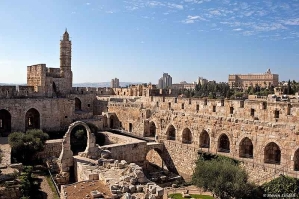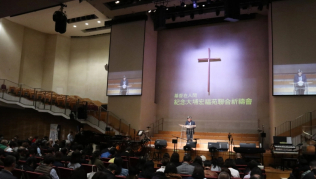
Archaeologists believe they have uncovered the site of Jesus Christ's trial by King Herod before He was crucified in Jerusalem's Old City--the most famous trial in all of history.
According to the Washington Post, the discovery was made during an excavation that began 15 years ago beneath an abandoned building close to the Tower of David Museum in Jerusalem.
Amit Re'em, the Jerusalem district archaeologist who led the excavation, said that while the uncovered building had in past centuries been used as a prison by the Ottoman Empire, Christ was likely trialed there by the brutal ruler, Herod the Great, as found in the New Testament book of John.
"[This site] is a great part of the ancient puzzle of Jerusalem and shows the history of this city in a very unique and clear way," Re'em said.
The Independent reports that the remains are being opened to the public through tours organized by the Tower of David Museum, which hopes the site will become a standard attraction for Christians in the future.
"We will continue to develop the prison for visitors," said museum director Eilat Lieber, adding that the historical richness of the prison will give visitors a better understanding of the past.
"It's like a cake," she said. "Showing all the layers of Jerusalem."
Yisca Harani, an expert on Christianity and pilgrimage to the Holy Land, said, "For those Christians who care about accuracy in regards to historical facts, this is very forceful."
He added, "For others, however, those who come for the general mental exercise of being in Jerusalem, they don't care as long as [their journey] ends in Golgotha - the site of the Crucifixion."
The site of Jesus' trial has been debated by Christian leaders and historians for many years due to differing interpretations of the Biblical account. Fox News reports that some suggest that Jesus was brought before Pilate in a "praetorium," a Latin term for a general's tent, while others believe this word could have described military barracks, or indeed the palace built by Herod.
However, Shimon Gibson, an archaeology professor at the University of North Carolina at Charlotte, told the WP that the Gospel of John describes the trial as taking place near a gate and on a bumpy stone pavement--which fits the archaeological finds at the site.
"There is, of course, no inscription stating it happened here, but everything - archaeological, historical and Gospel accounts - all falls into place and makes sense," Gibson said.







